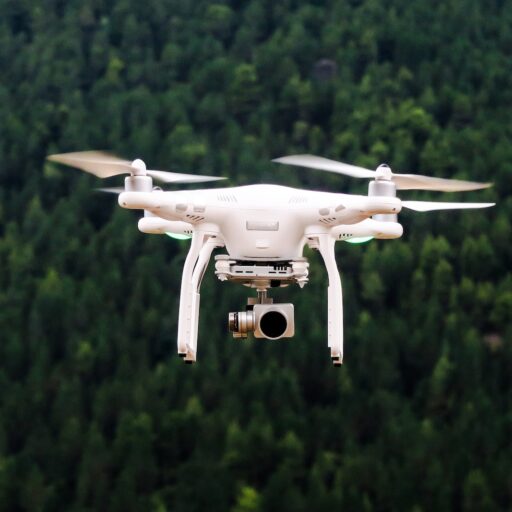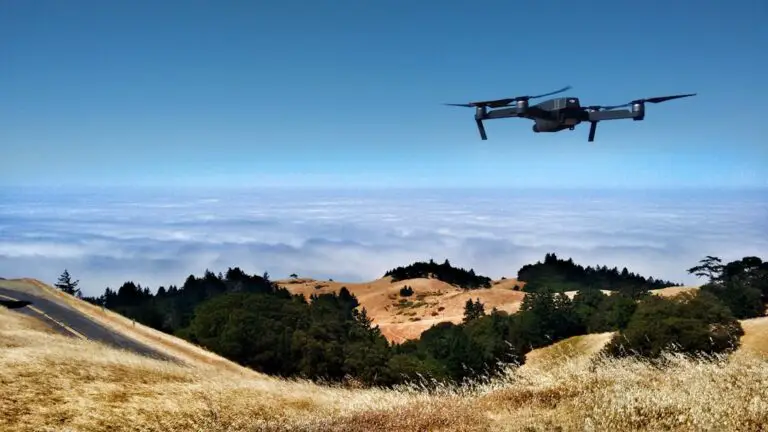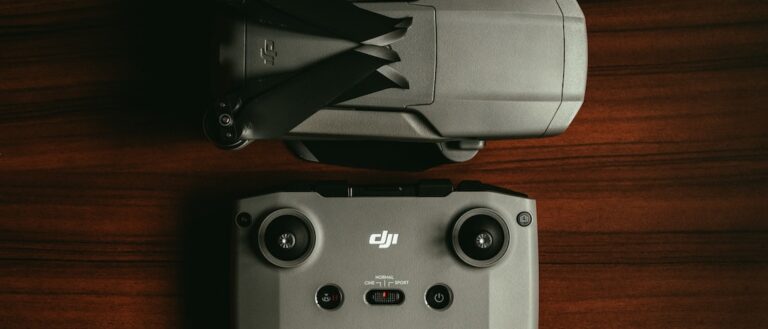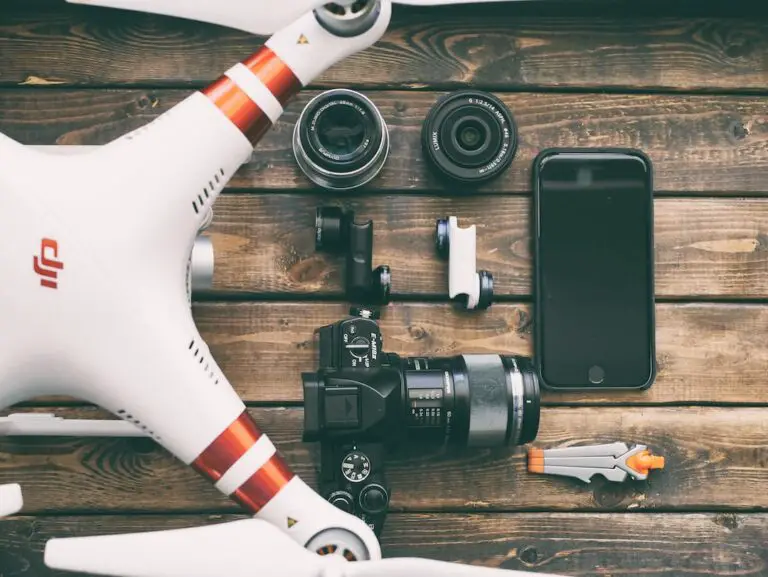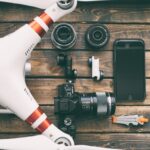Support our educational content for free when you purchase through links on our site. Learn more
🚁 Top 25 Drones for Sale in 2025: Ultimate Buyer’s Guide & Reviews
Ready to take your adventures to new heights? Whether you’re a beginner eager to launch your first drone, a content creator chasing cinematic perfection, or a professional seeking precision mapping tools, this guide has you covered. At Drone Brands™, we’ve tested dozens of drones—from nimble pocket-sized flyers to industrial-grade UAVs—and distilled everything you need to know before you buy.
Did you know that the global drone market is projected to grow by over 20% annually through 2025? That means more innovation, better tech, and more options than ever before. But with so many drones for sale, how do you pick the perfect one? Stick around as we reveal the hottest models, insider tips on features, and even the best times and places to snag a deal. Plus, we’ll dive into the thrilling world of FPV racing drones and the future of drone delivery!
Key Takeaways
- Choose your drone based on your goals: beginner-friendly models like the Ryze Tello, cinematic powerhouses like the DJI Mini 4 Pro, or commercial giants like the DJI Matrice 350 RTK.
- Understand essential features: flight time, camera sensor size, obstacle avoidance, and transmission range are critical for a satisfying flight experience.
- Stay legal and safe: register your drone if required, know local laws, and always fly responsibly.
- Smart shopping tips: consider manufacturer-refurbished drones and buy during seasonal sales for the best value.
- Don’t forget accessories: extra batteries, ND filters, and portable power stations can elevate your flying game.
👉 Shop top drones and accessories here:
- Beginner Drones on Amazon
- DJI Mini 4 Pro on DJI Official Store
- FPV Drones on Amazon
- Portable Power Stations on Amazon
Table of Contents
- ⚡️ Quick Tips and Facts
- 🚁 The Sky’s the Limit: A Brief History of Drones and Their Evolution
- 🤔 Why Buy a Drone? Unlocking Your Aerial Ambitions
- Unveiling the Fleet: Different Drones for Different Dreams
- 💡 What to Look For: Essential Features and Specifications
- Flight Time and Battery Life: Staying Airborne Longer
- Camera Quality and Gimbal Stability: Crystal Clear Shots
- Range and Transmission System: Keeping the Connection Strong
- GPS and Navigation Features: Smart Flying Made Easy
- Obstacle Avoidance: Bumping Less, Flying More
- Portability and Design: Drones on the Go
- Durability and Build Quality: Surviving the Occasional Mishap
- Software and App Ecosystem: The Brains Behind the Flight
- 💰 Smart Shopping: Navigating Drone Deals and Discounts
- ⚖️ The Law Above: Understanding Drone Regulations and Licensing
- 🔥 The Hottest Drones on the Market Right Now
- 🛒 Where to Buy Your Dream Drone: Retailers, Online Stores, and Expert Advice
- 🔋 Powering Your Adventures: Essential Portable Power Solutions for Drone Pilots
- 🛠️ Essential Drone Accessories: Enhancing Your Flight Experience
- 🎬 Beyond the Drone: Handheld Gimbals for Seamless Vlogging
- 🎥 Professional Production: Advanced Handheld Stabilizers for Cinematic Excellence
- 🔧 Keeping Your Drone in Top Shape: Maintenance Tips and Troubleshooting
- 🔮 The Horizon Ahead: Emerging Drone Technologies and Trends
- Conclusion
- Recommended Links
- FAQ
- Reference Links
Here at Drone Brands™, we’ve spent countless hours with propellers whirring over our heads, controllers in hand, and a grin on our faces. We’ve crashed them, repaired them, and pushed them to their limits to bring you the real scoop. So, you’re looking for drones for sale? Friend, you’ve come to the right place. Forget the dry, boring spec sheets. We’re about to take you on a flight through everything you need to know, from your first tentative hover to becoming an aerial maestro.
Let’s get those props spinning!
⚡️ Quick Tips and Facts
In a hurry? Here’s the flight plan in a nutshell. These are the essential bits of intel we share with every aspiring pilot.
- Weight Matters: Drones weighing over 250 grams (0.55 lbs) must be registered with the FAA in the United States. Many popular models, like the DJI Mini series, are designed to be just under this weight limit to make your life easier.
- Know Before You Fly: Always use an app like the FAA’s B4UFLY to check for no-fly zones and local airspace restrictions before you take off. Seriously, don’t be that person.
- Battery Life is… Optimistic: The flight time advertised on the box is usually tested in perfect, no-wind conditions. Expect to get about 70-80% of that time in the real world. Always buy extra batteries!
- The 250g “Magic Number”: Why do so many brands aim for 249g? It’s not just about avoiding registration. In many countries, sub-250g drones face fewer operational restrictions, making them perfect for travelers.
- It’s a Booming Industry: The global drone market is soaring, with some reports predicting massive growth in the coming years. For a deeper dive, check out our comprehensive breakdown of Drone Statistics Worldwide (2025): 10 Eye-Opening Facts You Must Know 🚀.
- FPV vs. GPS Drones: These are two completely different beasts. GPS drones are stable, camera-focused platforms (think floating tripods). FPV (First-Person View) drones are built for speed, agility, and an immersive flight experience. We’ll dive into this later!
- Don’t Fear the Refurb: Officially refurbished drones, especially from brands like DJI, can be a fantastic way to get a high-quality drone for less. They typically come with a full warranty.
🚁 The Sky’s the Limit: A Brief History of Drones and Their Evolution
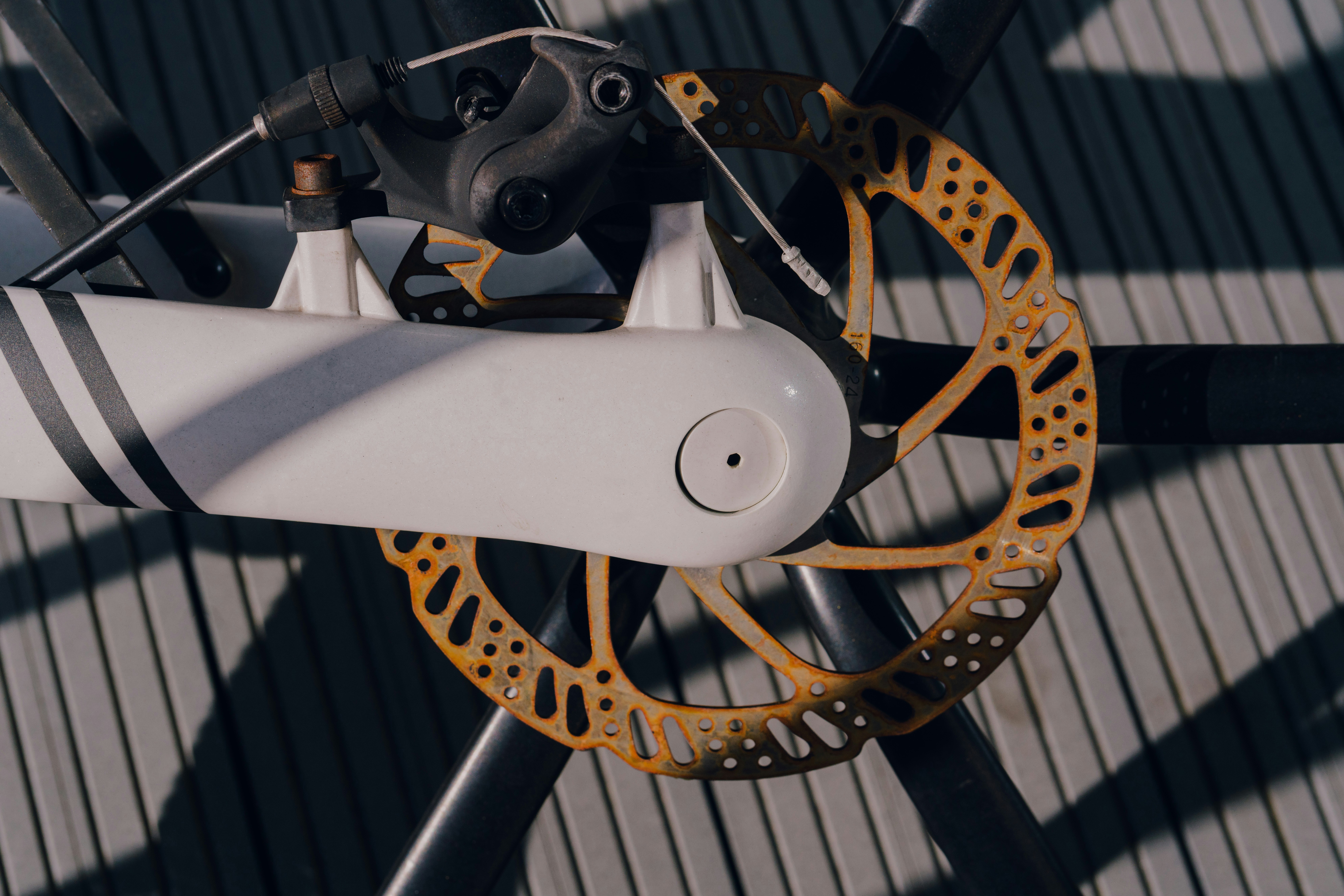
Before “drone” meant epic vacation videos, the word conjured images of bulky, buzzing military craft. Unmanned Aerial Vehicles (UAVs) have their roots in military reconnaissance, dating back to the mid-20th century. For decades, they were the exclusive toys of governments and massive corporations.
Then, something incredible happened. Technology, as it always does, got smaller, cheaper, and smarter. The same GPS, accelerometers, and processors that powered the smartphone revolution found a new home in quadcopters. Suddenly, what was once the size of a small plane could fit in your backpack.
I remember seeing the first DJI Phantom back in 2013. It was this white, slightly intimidating plastic shell. It looked like something out of a sci-fi movie. But when it lifted off the ground and just… hovered, perfectly still? It was pure magic. That was the moment the game changed for everyone. It was the dawn of the consumer drone era, paving the way for the incredible machines we fly today.
🤔 Why Buy a Drone? Unlocking Your Aerial Ambitions
So, why are you really here? What’s the little voice in your head telling you a drone will solve? For most people, it falls into one of a few camps.
- The Memory Maker 📸: You want to capture your life from a breathtaking new perspective. Family vacations, hikes, beach days—everything looks more epic from 100 feet up. You’re not just taking a photo; you’re creating an heirloom.
- The Content Creator 🎬: Your YouTube channel, Instagram feed, or TikTok is hungry for dynamic, eye-catching footage. A drone is the ultimate tool for cinematic pans, dramatic reveals, and establishing shots that make your content look professional and polished.
- The Adrenaline Junkie 💨: You’ve seen those insane FPV videos of drones diving down mountainsides and weaving through forests. You don’t just want to see the world; you want to fly through it. The immersive thrill of FPV is unlike anything else.
- The Entrepreneur 💼: You see a business opportunity. From real estate photography and roof inspections to creating stock footage, a drone can be a powerful tool to start a side hustle or a full-blown company. There are countless Drone Business Opportunities waiting to be explored.
Which one are you? Maybe you’re a little bit of all of them. The beauty of modern drones is their versatility. The same drone that captures stunning family photos on Saturday can be used for a paid real estate gig on Sunday.
Unveiling the Fleet: Different Drones for Different Dreams
Not all drones are created equal. Buying the wrong one is like showing up to a Formula 1 race with a minivan. Let’s break down the main categories to find your perfect co-pilot.
1. 🚀 Beginner-Friendly Drones: Your First Flight into the Sky
Welcome, rookie! Your journey starts here. Beginner drones are all about being forgiving, affordable, and easy to fly. They’re designed to help you learn the ropes without the heart-stopping fear of crashing a super expensive machine. These are your training wheels for the sky. For more options, check out our full guide to Beginner Drones.
Our Top Picks for New Pilots
Ryze Tello
This little guy is a collaboration between Ryze, DJI, and Intel, and it’s a fantastic learning tool. It’s tiny, durable, and can even be programmed using Scratch, making it a great STEM toy.
| Feature | Rating (1-10) | Notes |
|---|---|---|
| Ease of Use | 9/10 | ✅ Flies with your phone, super simple interface. |
| Durability | 8/10 | ✅ So light it often just bounces off things. Prop guards included. |
| Camera Quality | 3/10 | ❌ It’s a 720p camera. Good for learning, not for cinematic masterpieces. |
| Flight Time | 4/10 | ❌ Around 10-13 minutes. You’ll want extra batteries. |
| Value | 10/10 | ✅ An amazing entry point to see if you even like the hobby. |
The Tello is perfect for flying indoors and learning basic controls. It won’t handle wind well, and the camera is basic, but for pure fun and education, it’s unbeatable.
SHOP RYZE TELLO ON:
2. 📸 Capturing the World: Top Camera Drones for Photography and Videography
This is the sweet spot for most people. These drones are built around one thing: capturing stunning, stable, high-quality images and video. They feature sophisticated GPS positioning for stable hovering and advanced cameras mounted on 3-axis mechanical gimbals. A gimbal is the magic that keeps your shot silky smooth, even if the drone is getting buffeted by wind.
The Best for Hobbyists and Content Creators
DJI Mini 4 Pro
This is, without a doubt, the king of compact camera drones. It packs an incredible amount of professional-level features into a sub-250g body.
| Feature | Rating (1-10) | Notes |
|---|---|---|
| Camera Quality | 9/10 | ✅ Incredible 1/1.3-inch sensor, 4K/60fps HDR, and true vertical shooting. |
| Portability | 10/10 | ✅ Folds up to fit in a jacket pocket. The ultimate travel drone. |
| Ease of Use | 9/10 | ✅ Omnidirectional obstacle avoidance makes it incredibly safe to fly. |
| Flight Time | 8/10 | ✅ Up to 34 minutes, which is fantastic for its size. |
| Features | 10/10 | ✅ ActiveTrack 360°, Waypoints, OcuSync 4 transmission… it’s stacked. |
The Drawback? It’s a premium product with a premium price tag to match. But for creators who need top-tier quality in a tiny package, it’s worth every penny. My personal Mini 4 Pro has been from the mountains of Colorado to the beaches of Mexico, and it’s never let me down.
Autel EVO Lite+
Don’t sleep on Autel! The EVO Lite+ is a serious competitor to DJI’s mid-range offerings, boasting a massive 1-inch sensor for incredible low-light performance.
| Feature | Rating (1-10) | Notes |
|---|---|---|
| Camera Quality | 10/10 | ✅ The 1-inch sensor and adjustable aperture are a photographer’s dream. |
| Flight Time | 9/10 | ✅ A class-leading 40 minutes of flight time. |
| Transmission | 8/10 | ✅ Strong signal, but DJI’s OcuSync is often considered slightly more robust. |
| Portability | 7/10 | ✅ It’s larger and heavier than the Mini series, putting it in a different weight class. |
| Color Science | 9/10 | ✅ Many pros prefer Autel’s more natural color profile out of the box. |
The choice between a DJI and an Autel often comes down to personal preference in image quality and user interface. Think of it like Canon vs. Nikon. Both are fantastic, just different.
SHOP CAMERA DRONES ON:
- DJI Mini 4 Pro: Amazon | Best Buy | DJI Official Website
- Autel EVO Lite+: Amazon | Adorama | Autel Official Website
Professional-Grade Aerial Cinematography Platforms
When Hollywood calls, you answer with a beast like the DJI Inspire 3. This isn’t a drone; it’s an aerial cinema platform. It features a full-frame 8K camera, interchangeable lenses, and dual-operator controls (one person flies, the other controls the camera). This is the top of the food chain, used for high-end film production and commercials. It’s a specialized tool for professionals with big budgets and bigger creative visions.
3. 💨 Adrenaline Rush: FPV Drones for Immersive Flying and Racing
Ready to feel like a superhero? FPV is where you wear goggles that show you a live feed directly from the drone’s nose. When the drone rolls, you feel like you’re rolling. It’s the closest humans can get to flying like a bird.
But be warned: FPV has a steep learning curve. You’ll crash. A lot. It’s part of the fun!
Getting Started with FPV
The DJI Avata is the best entry point for most people. It’s a “cinewhoop” style drone with ducted propellers, making it safer to fly around people and objects. It’s designed to be flown with an intuitive motion controller, which makes your first flights much less intimidating.
| Feature | Rating (1-10) | Notes |
|---|---|---|
| Immersion | 10/10 | ✅ The experience with the DJI Goggles is breathtaking. |
| Ease of Use | 8/10 | ✅ The motion controller is brilliant for beginners. Full manual mode is available. |
| Durability | 9/10 | ✅ The built-in prop guards and robust frame can take a beating. I’ve bounced mine off more trees than I can count. |
| Camera Quality | 7/10 | ✅ Good 4K quality with excellent stabilization, but not on par with a dedicated camera drone. |
| Agility | 6/10 | ❌ It’s not as fast or acrobatic as a custom-built racing drone. |
Building Your Own FPV Rig
For the true adrenaline junkies and tinkerers, nothing beats building your own FPV drone. You select the frame, motors, flight controller, and camera. It’s a deep, rewarding hobby, but it requires soldering skills and a lot of patience. Brands like iFlight, GEPRC, and BetaFPV are staples in the DIY community.
4. 🏗️ Drones at Work: Specialized Commercial and Industrial UAVs
Drones are more than just flying cameras; they’re powerful tools revolutionizing industries. These are highly specialized, rugged machines built for specific jobs.
Precision Mapping & Surveying Drones
As the experts at Advexure note, drones like the DJI Phantom 4 RTK are a “game-changer for surveying and mapping.” These drones use Real-Time Kinematic (RTK) technology to achieve centimeter-level accuracy, creating highly detailed 3D models and maps for construction, land management, and mining. For larger areas, a VTOL (Vertical Take-Off and Landing) fixed-wing drone like the WingtraOne GEN II is the go-to, offering the efficiency of a plane with the convenience of a helicopter.
Agricultural Drones for Smart Farming
Drones like the DJI Agras series are changing the face of farming. Equipped with multispectral sensors, they can analyze crop health from the air, identifying issues with irrigation or pests before they’re visible to the human eye. Larger models can even be used for precision spraying of fertilizers or pesticides, saving resources and reducing environmental impact.
Thermal Drones for Inspection and Search & Rescue
A drone equipped with a thermal camera, like the Autel EVO MAX 4T or DJI Mavic 3 Thermal, can see heat signatures. This is invaluable for:
- Search and Rescue: Finding missing persons in the dark.
- Firefighting: Identifying hotspots in a blaze.
- Inspections: Detecting heat loss in buildings or failing components on solar panels.
Delivery Drones: The Future of Logistics
Companies like Zipline and Wing (an Alphabet company) are already using autonomous drones to deliver medical supplies, food, and packages in various parts of the world. While widespread urban drone delivery is still a few years away, the technology is rapidly advancing, promising to be a major part of our future logistics network. Keep an eye on our Drone Industry News for the latest updates.
💡 What to Look For: Essential Features and Specifications
Alright, you know the type of drone you want. Now, how do you compare two different models? Let’s decode the spec sheet.
Flight Time and Battery Life: Staying Airborne Longer
This is simple: longer is better. Most consumer drones offer between 25-45 minutes. Remember our tip: real-world time will be less. A drone with 30+ minutes of flight time is a great target. Intelligent Flight Batteries from brands like DJI are fantastic because they have built-in management to prevent overcharging and will self-discharge to a safe storage level if you forget.
Camera Quality and Gimbal Stability: Crystal Clear Shots
Don’t just look at megapixels (MP)! Here’s what really matters:
- Sensor Size: This is the most important factor. A larger sensor (like a 1-inch or 4/3 sensor) captures more light, resulting in better detail, dynamic range, and low-light performance.
- Video Resolution & Framerate: 4K is the standard now. Look for at least 4K/30fps. 4K/60fps is even better for smooth motion or creating slow-motion effects.
- Bitrate: Measured in Mbps, a higher bitrate means less compression and more image data. Look for 100 Mbps or higher for pro-quality video.
- Gimbal: A 3-axis mechanical gimbal is non-negotiable for smooth video. Anything less (like digital stabilization alone) will result in shaky, amateurish footage.
Range and Transmission System: Keeping the Connection Strong
This determines how far you can fly your drone without losing the video feed or control. DJI’s OcuSync (now on O4) is the industry leader, offering miles of range and a rock-solid HD video feed. Autel’s SkyLink is also excellent. Don’t be fooled by cheap Wi-Fi drones that claim long ranges; their connection is often unstable and prone to interference, especially in urban areas.
GPS and Navigation Features: Smart Flying Made Easy
Modern drones use GPS and other satellite systems (GLONASS, Galileo) to know exactly where they are. This enables crucial features:
- Stable Hover: The drone stays locked in place, even in a breeze.
- Return-to-Home (RTH): If the signal is lost or the battery is low, the drone will automatically fly back to its takeoff point. This is a lifesaver.
- Intelligent Flight Modes: Automated shots like orbiting a point of interest (POI), following a subject (ActiveTrack), or flying a pre-programmed path (Waypoints).
Obstacle Avoidance: Bumping Less, Flying More
Sensors on the drone’s body detect obstacles and prevent you from crashing.
- Basic: Forward and downward sensors.
- Good: Forward, backward, and downward sensors.
- Excellent (Omnidirectional): Sensors on all sides (front, back, up, down, and sides) for maximum protection. The DJI Mini 4 Pro and Mavic 3 series have this, and it provides incredible peace of mind.
Portability and Design: Drones on the Go
How easy is it to take with you? Most modern drones from DJI and Autel feature a foldable design, making them incredibly compact. A drone that lives in its case because it’s too big to carry is a drone you won’t fly.
Durability and Build Quality: Surviving the Occasional Mishap
Look for high-quality plastics and a solid feel. While no consumer drone is indestructible, some are built tougher than others. Read reviews and see what other pilots say about how the drone holds up to minor bumps and scrapes.
Software and App Ecosystem: The Brains Behind the Flight
The app is your cockpit. A good app (like DJI Fly or Autel Sky) is intuitive, stable, and packed with features. It should give you all the telemetry you need (altitude, speed, battery life) and provide seamless control over camera settings. A clunky, buggy app can ruin the entire flying experience.
💰 Smart Shopping: Navigating Drone Deals and Discounts
Who doesn’t love a good deal? But you need to be smart about it.
Understanding Refurbished Drones and Warranties
We mentioned this before, but it’s worth repeating. A manufacturer-refurbished drone is a fantastic option. These are typically customer returns or demo units that have been rigorously tested, repaired, and certified by the manufacturer. They are graded as new and come with the same warranty as a brand-new product.
- ✅ Pros: Significant savings, full warranty, manufacturer-certified quality.
- ❌ Cons: Availability can be limited, may have minor cosmetic blemishes (though often not).
You can find these directly on sites like the DJI Refurbished Products section.
When to Buy: Seasonal Sales and New Releases
The best times to find drones for sale are:
- Black Friday / Cyber Monday: The most obvious, with deals across all major retailers.
- After a New Model Launch: When a new drone (e.g., a “Mini 5”) is released, the previous generation (the “Mini 4”) will almost always see a significant price drop. If you don’t need the absolute latest tech, this is the best time to buy.
- Amazon Prime Day: Often features great deals on DJI and Autel drones.
⚖️ The Law Above: Understanding Drone Regulations and Licensing
This is the most important section of this entire article. Flying illegally can result in massive fines and even jail time. Ignorance is not an excuse. For a full breakdown, visit our Drone Laws and Regulations section.
FAA Rules and Recreational Flying
If you are flying purely for fun in the United States, you are a recreational flyer. Here are the core rules:
- Register Your Drone: If it weighs 250g or more, you must register it with the FAA and label your drone with the registration number.
- Take The TRUST Test: All recreational flyers must pass The Recreational UAS Safety Test (TRUST). It’s free, online, and you can’t fail. It’s designed to ensure you understand the basic safety rules.
- Fly Below 400 Feet: You must stay in uncontrolled airspace and fly at or below 400 feet above the ground.
- Keep Your Drone in Sight: You must maintain a visual line of sight (VLOS) with your drone at all times.
- Don’t Fly Over People or Moving Vehicles: This is a big one for safety.
- Respect No-Fly Zones: Never fly near airports, military bases, national parks, or over stadiums and critical infrastructure. Use the B4UFLY app.
Commercial Operations: Part 107 and Beyond
If you use your drone for any purpose that benefits a business or organization—even just posting monetized videos to YouTube—you are a commercial pilot. You must obtain a Remote Pilot Certificate from the FAA, also known as a Part 107 license. This involves passing a 60-question aeronautical knowledge exam at an FAA-approved testing center.
Local Laws and No-Fly Zones
On top of federal FAA rules, you must also obey all state and local laws. Many state parks, for example, have banned drones entirely. Always check local ordinances before you fly.
🔥 The Hottest Drones on the Market Right Now
If you want the latest and greatest, here’s what the team at Drone Brands™ is buzzing about right now:
- The All-Rounder King: DJI Mini 4 Pro
- It’s the drone we recommend to almost everyone. The combination of image quality, safety features, and sub-250g weight is an unbeatable package.
- The FPV Game-Changer: DJI Avata
- It has made the immersive world of FPV accessible and safer for beginners. The thrill is real, and the learning curve is much gentler than with traditional FPV.
- The Prosumer Powerhouse: Autel EVO II Pro V3
- With its 6K 1-inch sensor and robust build, this is a workhorse for serious photographers and videographers who want an alternative to the DJI ecosystem.
- The Enterprise Titan: DJI Matrice 350 RTK
- As Advexure highlights, this platform builds on the legacy of its predecessor, offering “even greater efficiency and safety” for the most demanding industrial jobs.
🛒 Where to Buy Your Dream Drone: Retailers, Online Stores, and Expert Advice
You’ve picked your drone. Now, where do you swipe the card?
Authorized Dealers vs. Third-Party Sellers
Our strong recommendation is to always buy from an authorized dealer. This ensures you get a legitimate product with a valid manufacturer’s warranty. A deal on eBay from a random seller might seem great, but if something goes wrong, you’ll have no recourse.
Our Experience with Major Retailers (e.g., Best Buy, Amazon)
- Amazon: Massive selection and fast shipping. However, be sure the seller is “Amazon.com” or the brand’s official storefront (e.g., “Sold by DJI Store”).
- Best Buy: Great for seeing the drone in person before you buy. Their staff’s knowledge can be hit-or-miss, but they are an authorized dealer and offer good return policies.
- Specialty Stores (e.g., Advexure, B&H Photo Video): These are fantastic resources. Their staff are experts who can provide tailored advice, especially for high-end or commercial drones.
Direct from Manufacturers (e.g., DJI Store, Autel Robotics)
Buying direct is often the best experience. You’re guaranteed an authentic product, and you can easily bundle it with accessories or care plans like DJI Care Refresh. The DJI website, as noted in their site code, is a complex operation designed to give you a tailored experience based on your region, ensuring you see the correct product availability.
🔋 Powering Your Adventures: Essential Portable Power Solutions for Drone Pilots
You’ve driven an hour to a stunning location, burned through your three drone batteries in 90 minutes, and the sunset is just starting to get good. Don’t let this be you! A portable power station is a game-changer for any serious pilot.
These aren’t your tiny phone power banks. We’re talking about high-capacity lithium batteries with AC outlets, capable of recharging multiple drone batteries in the field. Think of it as bringing a wall outlet with you.
What to look for:
- Capacity: Measured in Watt-hours (Wh). A 300-500Wh station is a great starting point.
- Output Ports: You need at least one AC outlet for your drone’s charging hub, plus USB-A and USB-C ports for controllers, phones, and other gear.
- Portability: Balance capacity with weight. You still have to carry it!
Brands like EcoFlow and Anker make some of the best portable power stations on the market. I personally use an EcoFlow RIVER 2, and it’s been a lifesaver on long shooting days.
SHOP PORTABLE POWER STATIONS ON:
- EcoFlow: Amazon | EcoFlow Official Website
- Anker: Amazon | Anker Official Website
🛠️ Essential Drone Accessories: Enhancing Your Flight Experience
The drone is just the beginning. The right accessories will make your flights safer, longer, and more creative. Here’s our must-have list:
Extra Batteries and Chargers
This is non-negotiable. Buy the “Fly More Combo” if it’s offered. It almost always includes 2-3 extra batteries and a multi-battery charging hub for a fraction of the cost of buying them separately.
Propellers and Prop Guards
You will break or chip a propeller eventually. Always have a spare set. Prop guards are great for beginners or when flying indoors, adding an extra layer of safety.
ND Filters for Cinematic Shots
Ever wonder how pros get that smooth, cinematic motion blur in their videos? They use Neutral Density (ND) filters. These are like sunglasses for your drone’s camera. They reduce the amount of light entering the lens, allowing you to use a slower shutter speed (ideally, double your frame rate) without overexposing the shot. Brands like PolarPro and Freewell make excellent filter sets.
Carrying Cases and Backpacks
The case that comes with your drone is okay, but a dedicated backpack or hard case offers better protection and organization. Look for cases with custom-cut foam and extra pockets for all your accessories.
Landing Pads and Safety Gear
A landing pad provides a clean, flat surface for takeoff and landing, protecting your drone’s gimbal and motors from dust, sand, and wet grass. It also makes you look like a pro.
🎬 Beyond the Drone: Handheld Gimbals for Seamless Vlogging
Your aerial shots are epic, but what about your ground game? To create a truly compelling video, you need smooth ground footage to match. A handheld gimbal stabilizer, like the DJI Osmo Mobile 6, turns your smartphone into a professional-grade stabilized camera. It uses the same gimbal technology as a drone to eliminate shaky hands, allowing you to walk, run, and pan while capturing buttery-smooth video. It’s the perfect companion piece for any drone pilot’s gear bag.
🎥 Professional Production: Advanced Handheld Stabilizers for Cinematic Excellence
For those using mirrorless or cinema cameras on the ground, the next step up is a professional handheld stabilizer like the DJI RS 3 Pro. These are larger, more powerful gimbals designed to handle heavier camera and lens combinations. They are the ground-based equivalent of an Inspire drone, offering incredible stability and control for high-end commercial and film production. They allow filmmakers to seamlessly blend breathtaking aerial shots with dynamic, stabilized ground-level cinematography.
🔧 Keeping Your Drone in Top Shape: Maintenance Tips and Troubleshooting
A well-maintained drone is a safe drone. Treat your gear with respect, and it will serve you well.
Pre-Flight Checks: Safety First!
Before every single flight, do a quick check:
- Weather: Check wind speed and precipitation. Don’t fly in rain or high winds.
- Props: Check for any nicks, chips, or cracks. Replace if damaged.
- Battery: Ensure it’s fully charged and securely clipped in.
- Gimbal: Remove the gimbal cover and check for free movement.
- Surroundings: Check for obstacles, people, and potential hazards.
Battery Care and Storage
Drone batteries are smart, but they need care.
- Don’t fly until the battery is at 0%. Land around 20-25%.
- Let batteries cool down after a flight before recharging.
- For long-term storage (more than a few days), don’t leave them fully charged. Most smart batteries will self-discharge to a storage level of around 50-60%, but it’s good practice to do it yourself.
Firmware Updates: Staying Current
Manufacturers regularly release firmware updates that improve performance, fix bugs, and add new features. Always keep your drone, controller, and batteries updated through the app.
When to Seek Professional Repair
If you have a serious crash that damages a motor arm, the gimbal, or the main body, don’t try to fix it with superglue. Send it to the manufacturer or a certified repair center. An improper repair can lead to a catastrophic failure in the air.
🔮 The Horizon Ahead: Emerging Drone Technologies and Trends
The world of drones is moving at lightning speed. What’s next?
- Artificial Intelligence (AI): Drones are getting smarter. AI is improving obstacle avoidance, subject tracking, and enabling fully autonomous flight paths for complex tasks like cinematography and industrial inspection.
- Increased Autonomy: The “pilot” will become more of a “mission commander,” telling the drone what to do, not how to do it.
- Drone-in-a-Box Solutions: Automated systems where a drone lives in a weatherproof box, deploying on a schedule to perform security patrols or inspections, then returning to recharge itself.
- Swarm Technology: Coordinated groups of drones working together, seen in spectacular light shows and being developed for tasks like search and rescue or agriculture.
The future is not just about better cameras or longer flight times; it’s about making drones more intelligent, autonomous, and integrated into our daily lives. It’s an exciting time to be a pilot, and we at Drone Brands™ can’t wait to see what takes flight next.
Conclusion
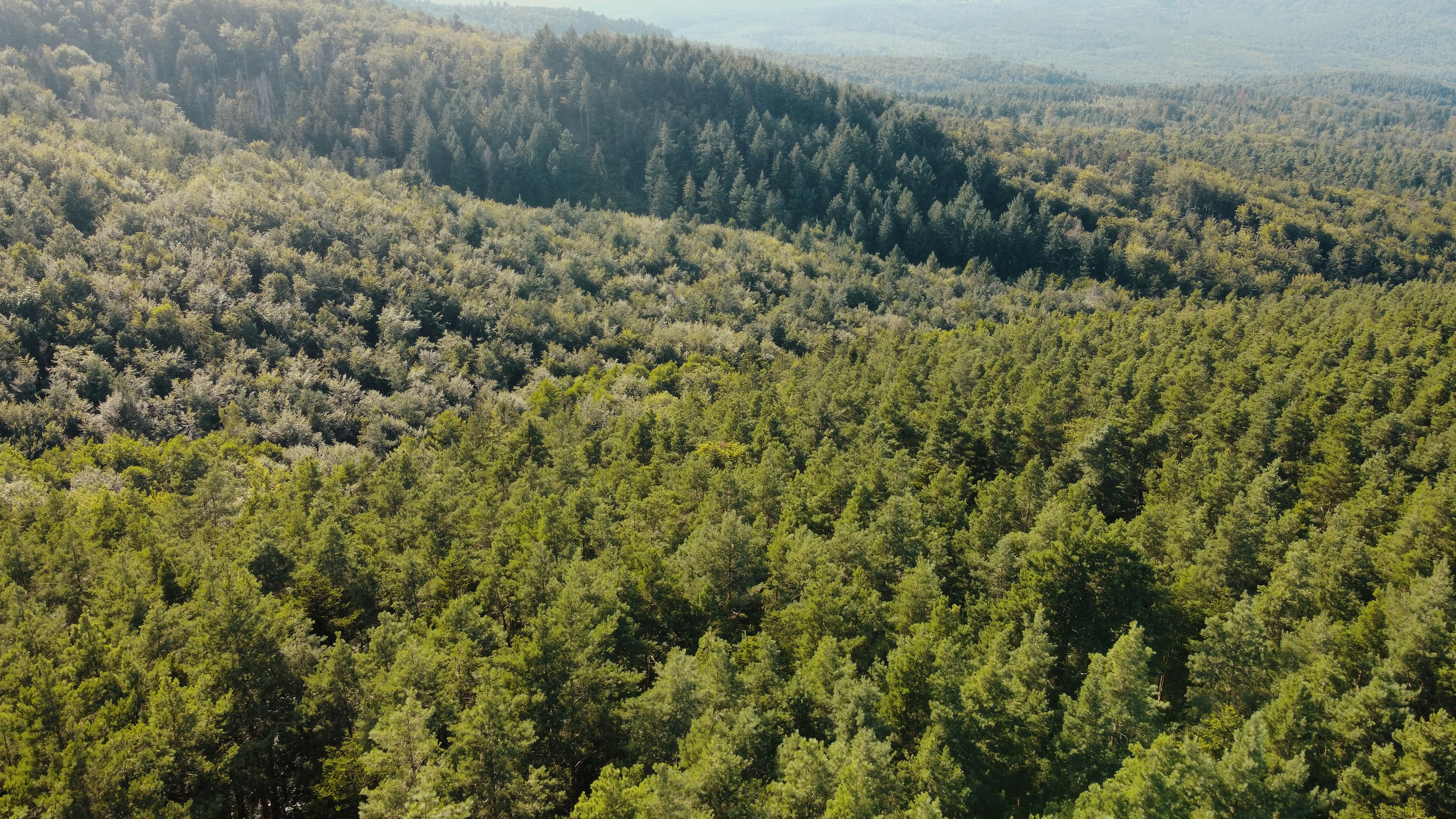
Whew! That was quite the flight through the skies of drone knowledge, wasn’t it? Whether you’re a newbie eyeing your first beginner drone like the Ryze Tello, a creative soul craving the cinematic magic of the DJI Mini 4 Pro, or a professional eyeing the industrial might of the DJI Matrice 350 RTK, there’s a drone out there tailored just for you.
Here’s the bottom line:
Drones are no longer niche gadgets for tech geeks or military use. They’re versatile tools that can capture memories, fuel creativity, pump adrenaline, and even power businesses. But with great power comes great responsibility — understanding the laws, investing in quality gear, and maintaining your drone properly will keep your flights safe and fun.
If you’re still wondering which drone to buy, start with your goals. Want to dip your toes? Grab a beginner drone like the Tello. Want to create jaw-dropping videos? The DJI Mini 4 Pro is a stellar choice. Need industrial-grade precision? The Matrice 350 RTK or WingtraOne GEN II are your workhorses.
Remember our earlier question about FPV drones and whether they’re worth the steep learning curve? The DJI Avata has made that leap accessible, blending thrill with safety. So, if you’re craving that immersive flight experience, it’s time to suit up and take the plunge.
Above all, enjoy the journey. Every flight is a new adventure, and every crash is a lesson (we’ve had plenty!). The sky is not the limit — it’s just the beginning.
Fly safe, fly smart, and keep those cameras rolling! 🚁✨
Recommended Links
Ready to shop or learn more? Here are some of our favorites, handpicked from the best in the business:
Drones for Sale
- Ryze Tello: Amazon | Walmart | DJI Official Website
- DJI Mini 4 Pro: Amazon | Best Buy | DJI Official Website
- Autel EVO Lite+: Amazon | Adorama | Autel Official Website
- DJI Avata FPV Drone: Amazon | DJI Official Website
- DJI Matrice 350 RTK: DJI Official Website
- WingtraOne GEN II: Wingtra Official Website
Portable Power Stations
- EcoFlow Portable Power Stations: Amazon | EcoFlow Official Website
- Anker Portable Power Stations: Amazon | Anker Official Website
Drone Accessories
- PolarPro ND Filters: Amazon
- Freewell ND Filters: Amazon
- DJI Osmo Mobile 6 (Handheld Gimbal): Amazon | DJI Official Website
- DJI RS 3 Pro (Professional Gimbal): Amazon | DJI Official Website
Books for Drone Enthusiasts
- “Make: Drones: Teach an Arduino to Fly” by David McGriffy — Amazon
- “The Drone Pilot’s Handbook” by Adam Juniper — Amazon
- “FPV Flight Dynamics” by Christian Mollica — Amazon
FAQ
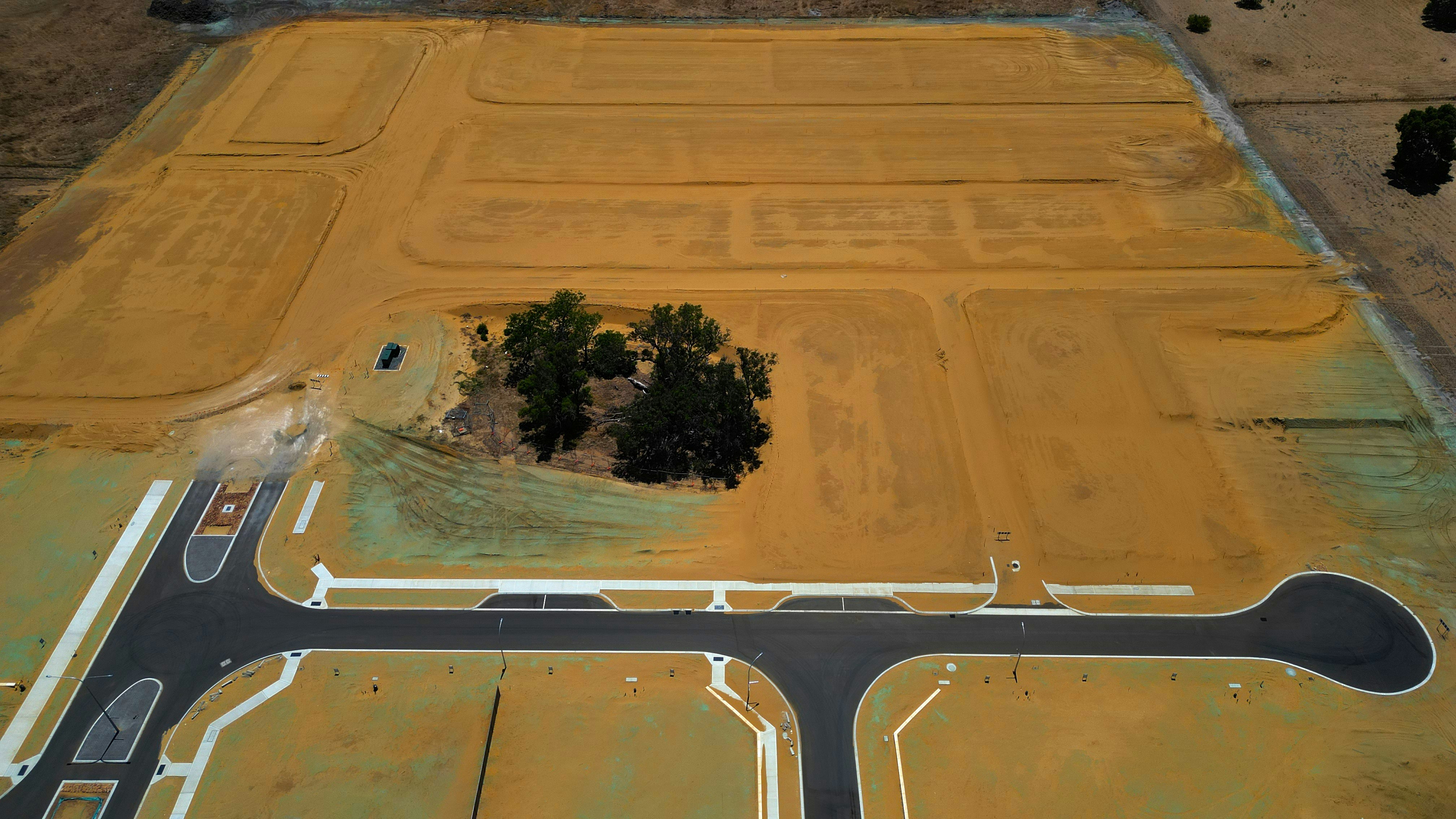
What are the best drones for beginners to buy?
For beginners, ease of use, durability, and affordability are key. The Ryze Tello is an excellent starter drone — it’s lightweight, simple to fly, and offers basic camera functionality. If you want something a bit more advanced but still beginner-friendly, the DJI Mini 4 Pro is a great choice, especially with its obstacle avoidance and stable GPS flight modes. These drones help you learn without overwhelming you with complex controls or risking a costly crash.
Read more about “What Drones Do Professionals Use? Top 15 Picks for 2025 🚁”
How much do high-quality drones for sale typically cost?
Prices vary widely depending on features and intended use. Entry-level drones like the Ryze Tello can be found for under $150, perfect for casual flyers and learners. Mid-range camera drones such as the DJI Mini 4 Pro or Autel EVO Lite+ typically range in the several hundreds to low thousands, offering professional-grade cameras and advanced flight features. High-end professional drones like the DJI Inspire 3 or Matrice 350 RTK can cost several thousands to tens of thousands, designed for commercial and industrial applications.
Read more about “Drone Business Startup Costs: 9 Essentials to Know in 2025 🚀”
What features should I look for when purchasing a drone for aerial photography?
Prioritize the camera sensor size, gimbal stabilization, and flight stability. A larger sensor (1-inch or bigger) captures more light and detail, crucial for stunning images and videos. A 3-axis mechanical gimbal ensures smooth footage even in windy conditions. Other important features include 4K video capability, high bitrate recording, obstacle avoidance sensors, and intelligent flight modes like ActiveTrack and Waypoints for creative shots.
Read more about “Top 7 4K Drones to Elevate Your Aerial Footage in 2025 🚁”
Are there any laws or regulations I need to be aware of before buying and flying a drone?
Absolutely. Drone regulations are strict and vary by country. In the U.S., drones over 250 grams must be registered with the FAA. Recreational flyers must pass the TRUST test and follow rules like flying below 400 feet, keeping the drone in sight, and avoiding no-fly zones. Commercial pilots need a Part 107 license. Local laws may impose additional restrictions. Always check the latest rules on official sites like the FAA and use apps like B4UFLY to ensure compliance.
How do I maintain my drone to ensure longevity and safety?
Regular maintenance is essential. Always perform pre-flight checks: inspect propellers, batteries, and sensors. Store batteries at recommended charge levels and avoid extreme temperatures. Keep firmware updated to benefit from the latest fixes and features. If your drone sustains damage, seek professional repairs rather than DIY fixes to avoid further issues.
What is the difference between FPV drones and camera drones?
FPV (First-Person View) drones prioritize speed, agility, and immersive flying experience, often used for racing and freestyle flying. They require wearing goggles to see the drone’s perspective in real-time and have a steep learning curve. Camera drones focus on stable flight and high-quality imaging, ideal for photography and videography. Some drones, like the DJI Avata, blend both worlds by offering FPV flight with good camera quality and safety features.
Read more about “What Percentage of Drones Are Used for Recreation vs. Commercial in 2025? 🚁”
Reference Links
- DJI Official Website — The global leader in consumer and professional drones.
- Autel Robotics Official Website — Innovative drone manufacturer with a strong focus on camera quality.
- Advexure Mapping and Surveying Drones — Precision drones for commercial and industrial applications.
- FAA Drone Regulations — Official U.S. government site for drone rules and registration.
- B4UFLY App — FAA’s app for checking flight restrictions.
- EcoFlow Portable Power Stations — Leading portable power solutions for field operations.
- PolarPro Filters — High-quality drone camera filters for cinematic footage.
- Wingtra Official Website — VTOL mapping drones for large-scale aerial surveying.
Fly high, fly safe, and welcome to the incredible world of drones! 🚀
